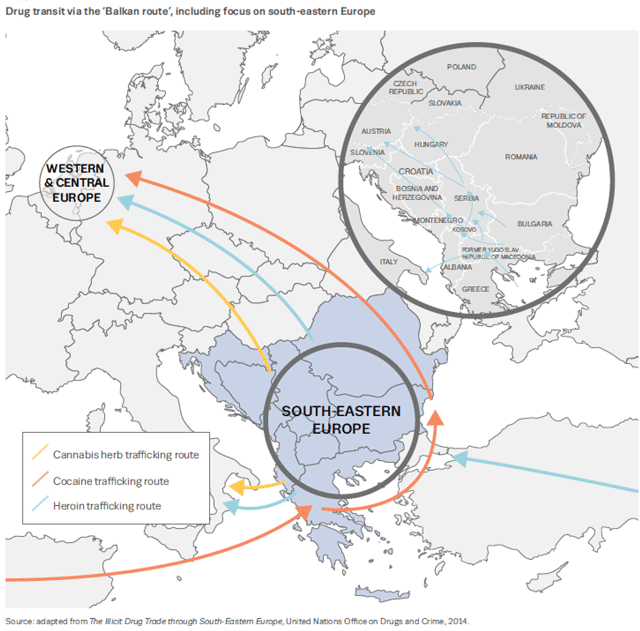First overview of the drug situation in the Western Balkans
24 Mar 2015 11:01 AM
The EU drugs agency (EMCDDA) published yesterday its first overview of the drug situation in the Western Balkans (1). Focusing on Albania, Bosnia and Herzegovina, the former Yugoslav Republic of Macedonia, Kosovo*, Montenegro and Serbia — all candidate and potential candidate countries to the European Union — the report describes a region facing a complex array of drug use problems and associated health and social consequences. It focuses specifically on problem drug use, drug-related deaths, the health effects of injecting and treatment and harm reduction responses.
‘This region is still all too often associated with the “Balkan route”, used by organised crime groups to smuggle illicit drugs, mainly heroin, from Central Asia to the European Union’, says EMCDDA Director Wolfgang Götz. ‘But this restrictive view does not do justice to the progress made in addressing the local, and highly complex, drug situation’.
Over the last 10–15 years, cooperation between the EMCDDA and the Western Balkans has developed, with support from specific EU programmes (2). Substantial progress has been made in this time in defining national drug strategies and setting up national drug coordination mechanisms, drug information systems and focal points in the region. Yesterday’s review draws on these achievements, particularly on data gathered and analysed in national reports submitted by Western Balkan countries to theEMCDDA.

Key findings
Notes
(1) Drug use and its consequences in the Western Balkans 2006–14 — * All references to Kosovo in this report should be understood to be without prejudice to positions on status, and in line with UNSCR 1244 and the International Court of Justice Opinion on the Kosovo declaration of independence. (2) Phare Programme; Community Assistance for Reconstruction, Development and Stabilisation (CARDS); and Instrument for Pre-Accession Assistance (IPA).
RelatedLinks